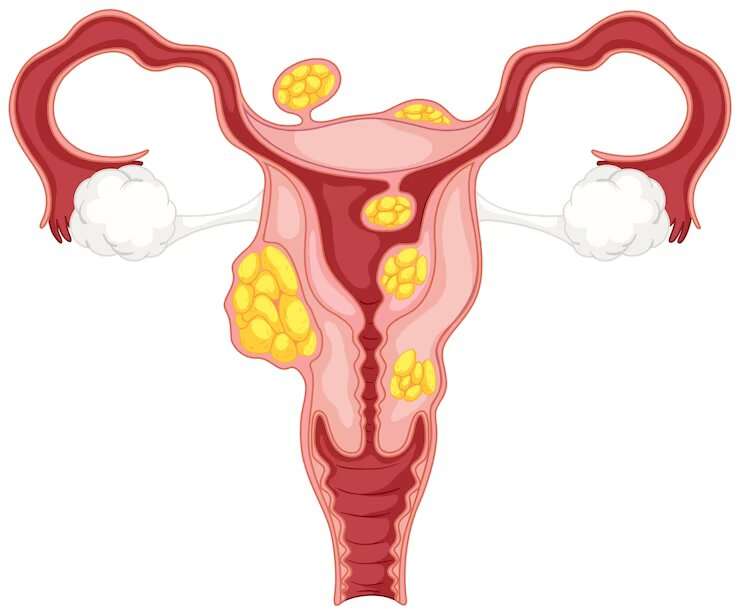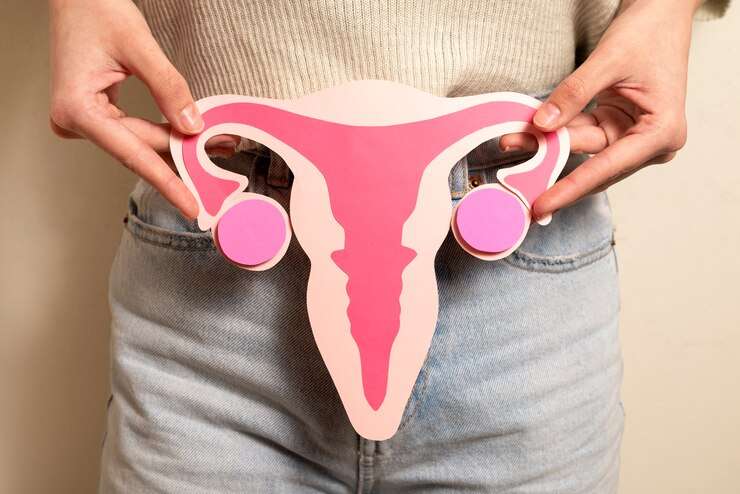Endometriosis is a long-term disease that affects millions of women around the world. It is often painful. In this case, the endometrium, a type of tissue that looks like the lining of the uterus, grows outside of the uterus. This kind of tissue can grow on the walls of the groin, the ovaries, and the fallopian tubes. In endometriosis and fertility, there is an endometrial implant. It may even spread outside of the pelvic area in very rare cases. Many people don’t know what it is, how it happens, or how to deal with it, even though it affects a lot of people.
To Whom Endometriosis Happens
Girls and women who can have children can get endometriosis. It most often happens between the ages of 10 and menopause. It is a common gynecological problem because about 1 in 10 women around the world have it.
What Kinds of Endometriosis and Fertility Are There?
Endometriosis is breaking down into different types based on where the endometrial implants are and how bad they are:
1. Superficial Peritoneal Endometriosis: This is the most common type. It is mark small, shallow implant on the lining of the pelvic region, called the peritoneum.
2. Endometriosis of the ovaries, also called an endometrioma, is when uterine tissue builds up in the ovaries. These are also called chocolate cysts.
3. Deep Infiltrating Endometriosis (DIE): This is the worst type of endometriosis because tissue from the uterus goes deep into the bladder or rectum, which is a pelvic organ.
4. Adenomyosis: This is when uterine tissue gets into the muscle wall of the uterus makes it hurt and gives you heavy periods. This is not the same as endometriosis.
What Makes Infertility?
Endometriosis’s exact reason is still unknown, but the following ideas have been put forward:
Retrograde Menstruation: Many people think that when a woman has her period, uterine cells in her blood move backward into her pelvis. In this situation, they settle and grow outside the uterus.
Damage to the immune system: If the immune system isn’t working right, then uterine tissue may be able to live and grow outside of the uterus.
Hormonal Effects: Hormones may play a role in how endometriosis starts and gets worse. Oestrogen is one such hormone. If your estrogen level is high, your endometrial implants may grow faster.
Genetics: Endometriosis often runs in families, so there is proof that some women may be more likely to get it because of their genes.
Environmental Factors: It has been found that some natural toxins may make you more likely to get endometriosis, but no one knows for sure yet.
Reasons For Endometriosis And Infertility
Endometriosis can show up in many different ways, with symptoms that run from mild to severe. Some common signs of endometriosis are:
The most common sign is pain in the pelvis, which often gets worse when you have your period.
- Dysmenorrhea: Painful menstruation, means severe monthly cramps that make it hard to do normal things. Period pain is not the only cause of chronic pelvic pain.
- Painful Intercourse (Dyspareunia): Having pain or discomfort during sleep.
- Heavy Menstrual Bleeding (Menorrhagia): periods that are too heavy or last too long.
- Urination or bowel movements that hurt, especially when you’re menstruating.
- Infertility: Endometriosis is the most common reason why women can’t have children.
What Causes Infertility
Endometriosis can be hard to diagnose because its symptoms can look like those of other gynecological diseases. Usually, the following steps are taken to diagnose endometriosis:
1. Medical background: Your doctor will look over your medical background and talk to you about your symptoms.
2. Physical Examination: A pelvic check may show problems or sore spots.
3. Imaging Tests: MRIs, ultrasounds, and other imaging tests can help find uterine implants, especially if they are big or connected to the ovaries.
4. Laparoscopy: The most accurate way to find out if someone has endometriosis is to do an invasive treatment called laparoscopy. During this surgery, a thin tube with a camera is put into the belly so that the endometrial tissue can be seen and even taken out for a test.
Treatment Options For Endometriosis And Fertility?
Treatment of Endometriosis is to ease the pain, increase fertility (if wanted), and stop the condition from getting worse. Some possible treatments are:
1. Painkillers: You can take over-the-counter painkillers or prescription drugs to help control your pain.
2. Hormonal Therapy: Low estrogen levels can be helped by hormonal treatments like birth control pills, hormonal IUDs, or GnRH agonists.
3. Laparoscopic Surgery: You can get rid of uterine implants and scar tissue with this type of treatment. This can help with pain and getting pregnant.
4. Hysterectomy: If the problem is very bad or if having children is not important, a hysterectomy (removing the uterus) may be performed.
5. Solutions for Infertility: In vitro fertilization (IVF) is used to help women become pregnant.
See a doctor or fertility specialist right away if you think you might have endometriosis or if you are having any of the symptoms that go along with proper medical treatment. They will be able to give you a correct diagnosis and a personalized plan for how to treat your endometriosis.
Conclusion:
At the end of the blog, highlight the main points and stress how important early detection and all-around treatment plans are for women with endometriosis who want to start a family. Encourage people to get professional help and information that is tailored to their needs.
FAQs Related Treatment Of Endometriosis
Q1: How can endometriosis affect fertility?
Adhesions and hormone imbalances in reproductive organs caused by endometriosis might hinder conception.
Q2: What are frequent fertility-affecting endometriosis symptoms?
Pelvic pain, especially during menstruation, and irregular cycles are common. Heavy menstruation may cause endometriosis affecting fertility.
Q3: Early endometriosis diagnosis?
Imaging and laparoscopic treatments can detect endometriosis early. Early detection is essential for fertility management.
Q4: Endometriosis-related fertility treatments?
Medication, hormonal, and surgical treatments are available. These reduce symptoms, treat structural alterations, and improve fertility.
Q5: Can endometriosis cure?
The cure for endometriosis is unknown. However, good care can reduce discomfort and enhance fertility.


